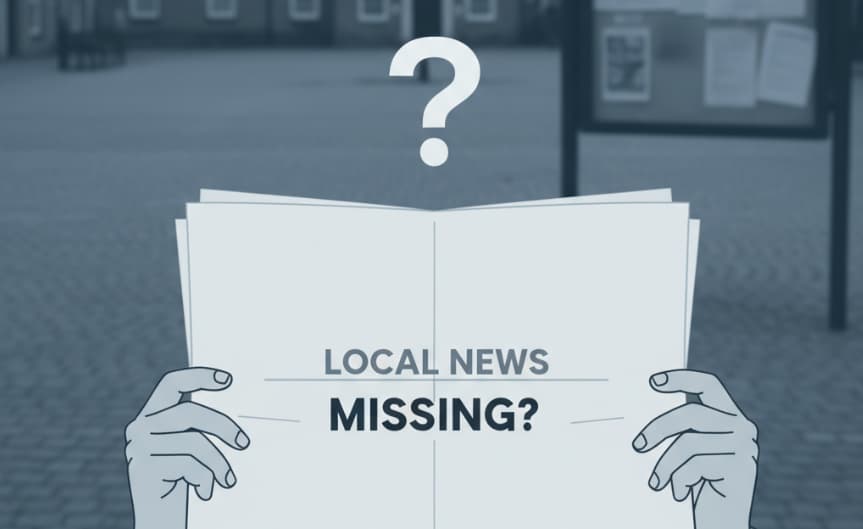In an era dominated by digital platforms, global news outlets, and endless streams of online content, local journalism is facing a silent crisis. Many small-town newspapers and community-focused publications struggle to keep up with the demands of readers, advertisers, and the competition from social media. As a result, coverage often becomes limited, leaving residents with fewer sources of reliable, localized information.
This raises an important question for both readers and contributors: when there’s a shortage of news in local outlets, should you get involved?
The Role of Local Journalism
Local newspapers and community outlets serve as the backbone of civic life. Unlike national media, they:
- Cover local council meetings, school boards, and community events.
- Give visibility to small businesses and nonprofits.
- Provide a platform for residents to share opinions and concerns.
- Preserve a sense of shared identity and belonging.
Without strong local journalism, communities risk losing accountability, transparency, and the sense of connection that comes from knowing what’s happening just around the corner.
Why Content Shortages Happen
Smaller publications often operate with limited staff and budgets. Reporters may be stretched thin, handling multiple beats or relying heavily on press releases and event announcements rather than in-depth reporting. Other challenges include:
- Financial pressure – Declining ad revenues mean fewer resources for hiring journalists.
- Competition from digital media – Social platforms capture attention faster than weekly print editions.
- Shifts in reader habits – Many people skim headlines online rather than subscribing to local papers.
- Lack of contributors – Without community members stepping up to provide stories, coverage gaps widen.
Why Your Involvement Matters
The shortage of news doesn’t just reflect a publication’s struggles; it reflects a community’s missed opportunities. When residents step up, they can help strengthen local journalism in several ways:
- Submitting community stories – Local achievements, events, or human-interest stories can enrich the publication’s content.
- Providing opinion pieces – Letters to the editor or guest columns encourage dialogue.
- Supporting financially – Subscriptions, donations, and advertising help sustain operations.
- Volunteering expertise – Photographers, writers, and even hobbyists can contribute valuable skills.
Getting involved means ensuring that stories about your community are told, stories that might otherwise go unnoticed.
The Value of Diverse Voices
One of the biggest advantages of community contributions is diversity of perspective. When only a small staff produces content, coverage risks becoming repetitive or narrow. By contrast, when residents contribute, local outlets benefit from:
- Variety of topics – From youth sports to cultural traditions.
- Different perspectives – Business owners, parents, students, and retirees each bring unique insights.
- Increased relevance – Coverage that reflects the community’s real interests.
In many ways, local publications become stronger when they are co-created with the very people they serve.
Local News and Civic Engagement
Research consistently shows that strong local journalism is tied to higher civic participation. Communities with active local newspapers tend to see:
- Higher voter turnout
- More informed debates on local issues
- Greater accountability among public officials
- Stronger support for local businesses
When local news diminishes, misinformation spreads more easily, and community bonds weaken. By contributing to outlets, residents not only improve content but also help protect the democratic health of their towns.
Balancing Local and Digital Consumption
Of course, local newspapers aren’t the only sources of news. Many people rely on digital platforms, apps, and global outlets for their daily updates. However, these rarely provide coverage of small-town events or municipal issues.
A healthy balance might include:
- Reading national news for global awareness.
- Following local outlets for community updates.
- Supporting both with subscriptions or donations.
Digital tools can enhance local journalism rather than replace it. For example, community members might share local stories online, boosting readership and awareness.
Overcoming Reader Fatigue
One issue many local outlets face is reader fatigue. When people feel overwhelmed by ads, pop-ups, or repetitive headlines, they tune out. Supporting tools like AdLock ad blocker can improve the reader experience by reducing clutter and making it easier to focus on the actual news. This doesn’t mean rejecting ads entirely; it means ensuring readers aren’t driven away by intrusive or excessive interruptions. A cleaner reading experience can encourage more people to engage with local content.
Should You Get Involved?
The answer is yes. Whether through writing, financial support, or simply spreading the word, your involvement helps sustain the lifeblood of community journalism. Publications reflect the heart of their towns, but they can only thrive when the community participates actively.
By contributing, you’re not just helping fill content gaps; you’re shaping the stories that define your community. You’re ensuring that your town’s achievements, challenges, and voices are heard, rather than lost in the shadow of global media.
Practical Ways to Start
- Pitch a story idea – Contact the editor with a proposal for coverage.
- Write a guest column – Share expertise, local knowledge, or personal stories.
- Send photos – Visual content adds life to print and digital editions.
- Promote the paper – Share articles online to expand readership.
- Invest in a subscription – Even small financial contributions make a difference.
Final Thoughts
The shortage of news in local publications isn’t just a problem for journalists; it’s a challenge for entire communities. By getting involved, you can help ensure that local stories are told with depth, accuracy, and heart.
The community outlets rely on their readers to be more than passive consumers. They need active participants willing to share stories, support financially, and champion the importance of local journalism.
So the next time you notice a coverage gap, consider stepping up. Your voice may be exactly what your community needs.
